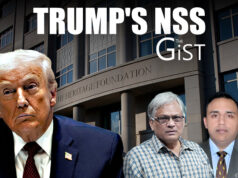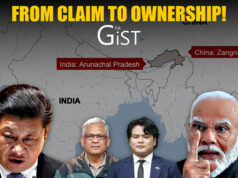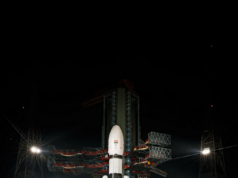India faces a sobering question as Washington sharpens its trade weapons under President Trump: does New Delhi have the resilience to absorb the pain of tariffs? For Professor Amit Gupta, Senior Adviser at the Forum of Federations, the problem goes beyond trade. He argues that India must even rethink its national security posture, including the “obsolete” no-first-use nuclear doctrine. “Why keep saying after you hit us, we will hit you?” Gupta asks, suggesting that India adopt a more flexible stance to deter adversaries like Pakistan.
On the economic front, Gupta warns that New Delhi’s confidence in managing Trump was “misplaced” from the start. “Trump is not a friend of India,” he said, pointing out that while Israel receives blanket American backing, India would be told to “exercise restraint” in any crisis. The trade standoff is already fraught: agriculture is a key stumbling block, but Trump’s deeper frustration is that India offers far less than what he has extracted from Japan, Korea and the EU.
The real test, Gupta insists, is not retaliation but endurance. “The issue is not putting tariffs. The issue is, can you sustain pain? China has taken pain. Russia has taken pain. Lula in Brazil has taken pain. Are you willing to do that?”
That pain could be severe. Indian pharmaceuticals—vital to American consumers—could see costs spike. Worse, Trump might cut H-1B or student visas, hitting the 300,000 Indians in U.S. universities and straining India’s IT sector, already under pressure from AI-driven layoffs.
Strategically, India has left itself exposed by refusing to join the ASEAN-led RCEP pact and failing to deepen ties with Brazil, South Africa, or ASEAN markets. The oft-repeated notion of India as a vast consumer economy is also exaggerated: Mercedes sells only 8,000 cars a year in India compared to 700,000 in China.
Gupta’s prescription is blunt: diversify partnerships with Brazil, South Africa and the UAE, work with trusted defence suppliers like Russia and France, and even cautiously reopen economic doors to China. Above all, India must brace itself. Projecting strength requires the willingness to endure pain—on tariffs, on trade, and perhaps even in nuclear doctrine.
In a career spanning three decades and counting, Ramananda (Ram to his friends) has been the foreign editor of The Telegraph, Outlook Magazine and the New Indian Express. He helped set up rediff.com’s editorial operations in San Jose and New York, helmed sify.com, and was the founder editor of India.com.
His work has featured in national and international publications like the Al Jazeera Centre for Studies, Global Times and Ashahi Shimbun. But his one constant over all these years, he says, has been the attempt to understand rising India’s place in the world.
He can rustle up a mean salad, his oil-less pepper chicken is to die for, and all it takes is some beer and rhythm and blues to rock his soul.
Talk to him about foreign and strategic affairs, media, South Asia, China, and of course India.




